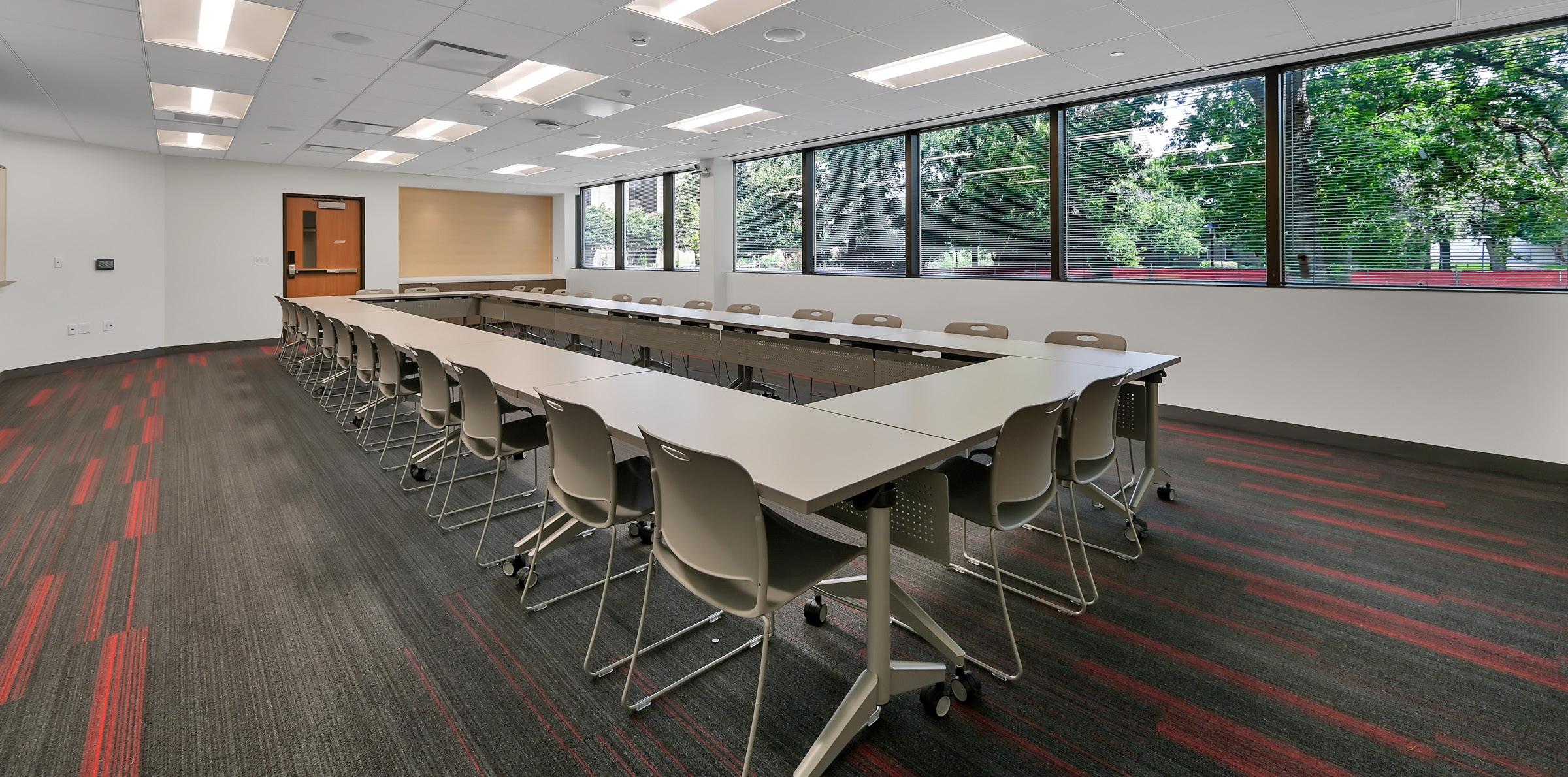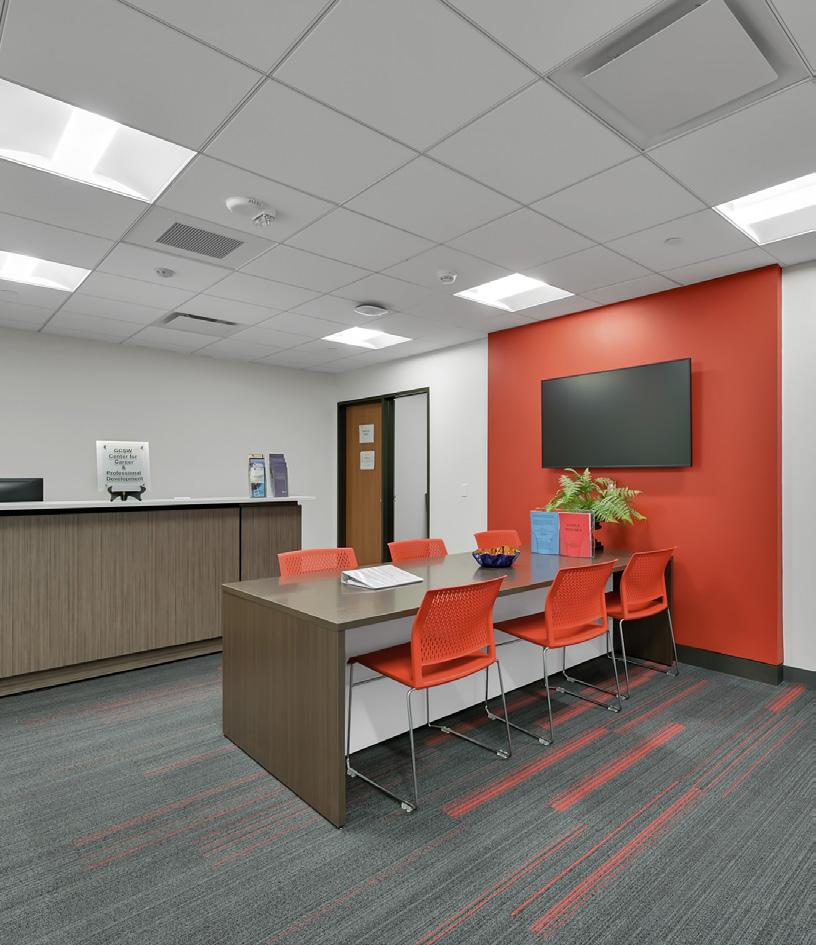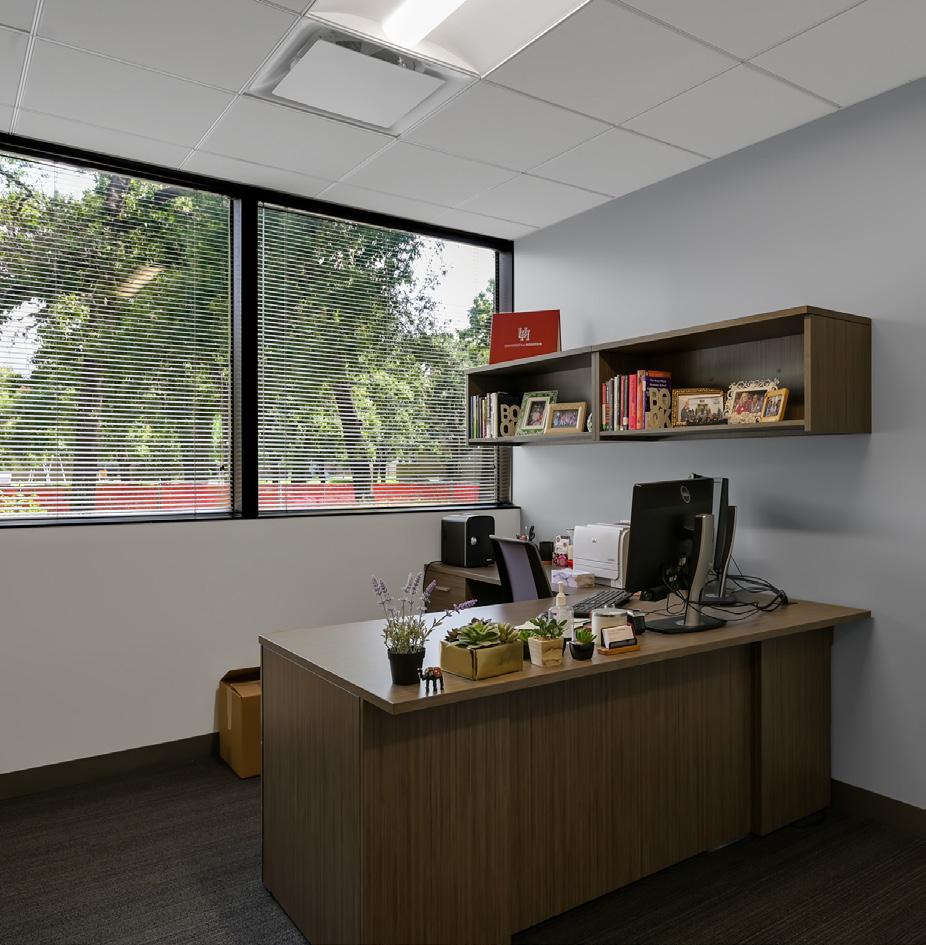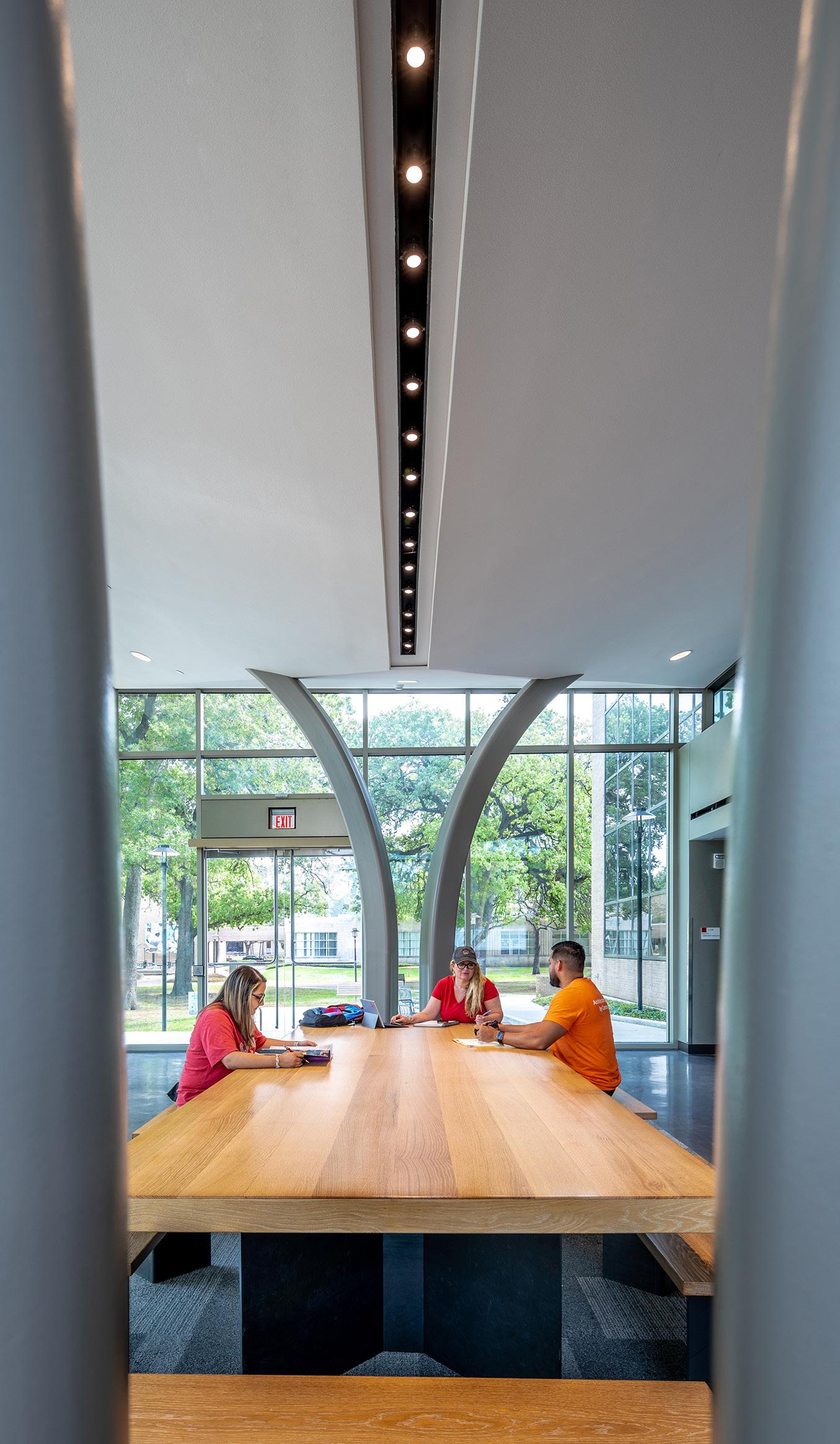
2 minute read
Graduate College of Social Work: The Epicenter of Conversations
Established in 1927, the University of Houston empowers students in their pursuit of learning, discovery, leadership, and engagement. Home to award-winning faculty and innovative research centers, the university has one of the most diverse student populations in the nation and alumni who have become international leaders.
The Graduate College of Social Work (GCSW) at the University of Houston, prepares diverse leaders in practice and research to address complex challenges and achieve sustainable social, racial, economic, and political justice, locally and globally, through exceptional education, innovative research, and meaningful community engagement.
Originally built in 1978, the GCSW building lacked adequate common space and emerging technology. Its outdated classrooms did not support the innovative research projects happening at the college. Over the past five years, the GCSW has grown from approximately 350 students in the Master of Social Work program to more than 500 today. Despite these challenges, the college continues to thrive, now ranked among the top 25 social work graduate programs in the country by U.S. News and World Report.
The GCSW is an epicenter of conversations reimagining social, racial, economic, and political justice, both locally and globally.
Due to the growing program, a new outdoor gathering space, terraced main entrance, lobby and entry pavilion were created to enhance the college’s visibility on campus. The new entry brightens up the current façade and welcomes people from all walks of life to have a place at the table.
The recent building improvement project included In addition, building improvements also included renovation of the entire first floor of the four-story GCSW building, creating much needed recirculation and modern learning environments that encourage collaboration between researchers, students and community partners. The project was funded in part by donations from the Mehta Family Foundation, Houston Endowment, Hamill Foundation, Frees Foundation and Creuzot family.



Located in a four-story building on the south end of a larger courtyard on the University of Houston campus, the college resides in the Central District of the campus, as identified in the UH Campus Master Plan Phase 1 (2015-2020). The building has a prominent place on the southern edge of the campus’ largest urban forests and is centered along an implied axis of a large green space.
The main feature of the renovated building is the grand entrance of the new Mehta Family Community Pavilion, which features an open and welcoming design that adds a modern style and character to the previously nondescript exterior. The space, dedicated to the work done by the faculty and students, celebrates the continuous impact graduates of the program have made in Texas and beyond.

Enclosed with glass on three sides, the new glass enclosed entry reflects the ideals of transparency for which college alumni advocate. Columns on each side of the pavilion branch out like a tree–the most basic of shelters–evoking a sense of nurture, care, and peace. A centralized large wood table within the pavilion invites collaboration from everyone who enters to join the conversation, share their experience, and learn from another.
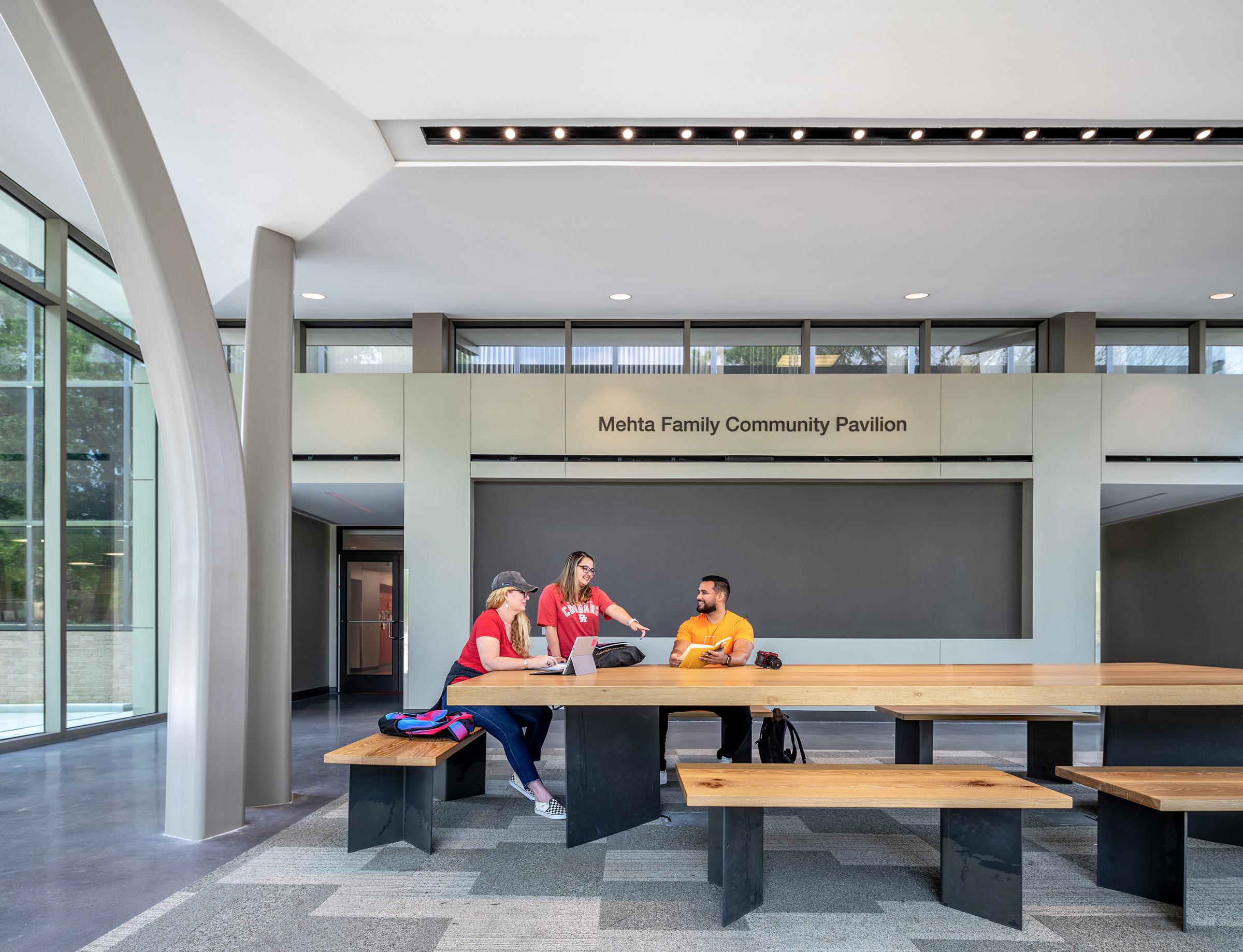
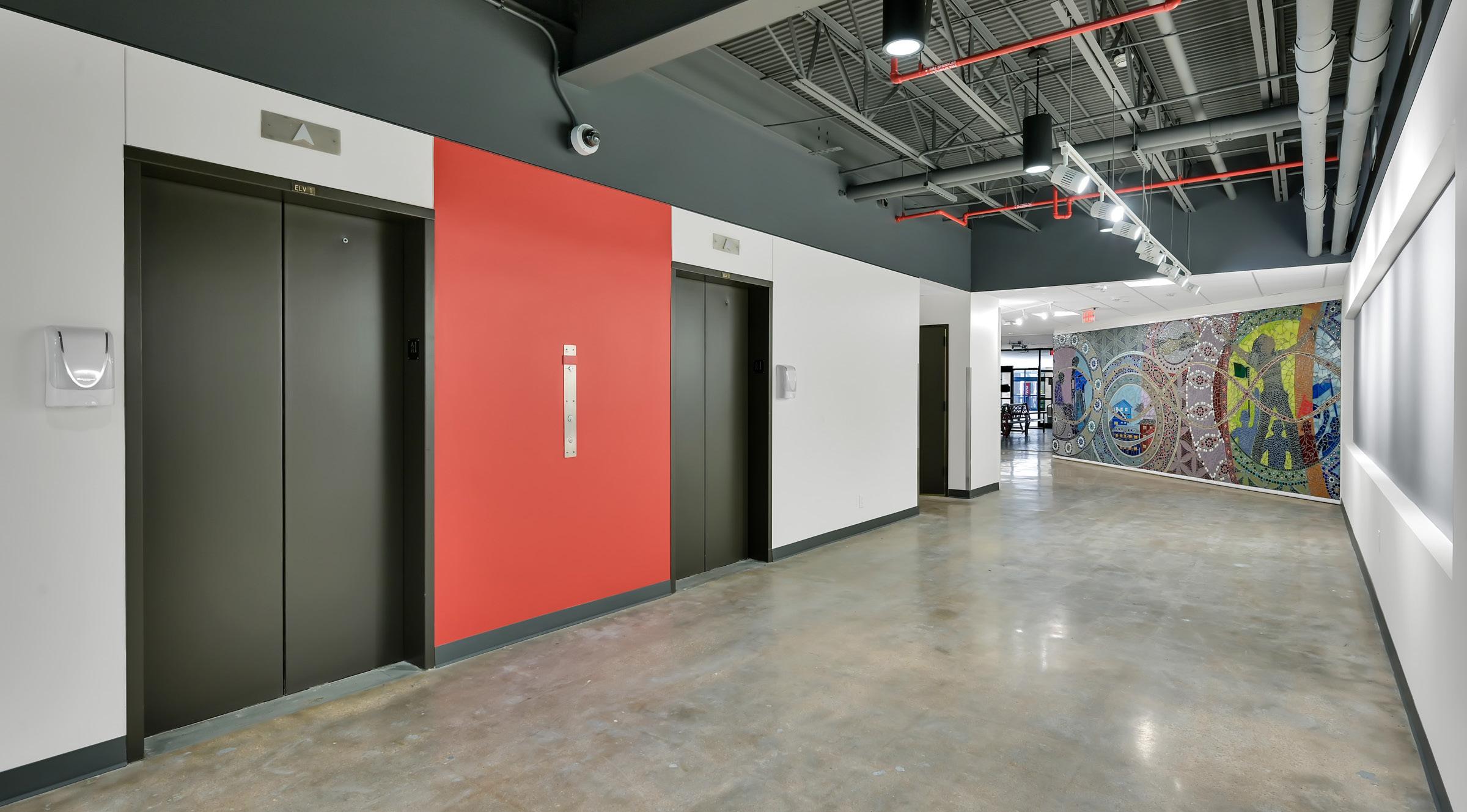

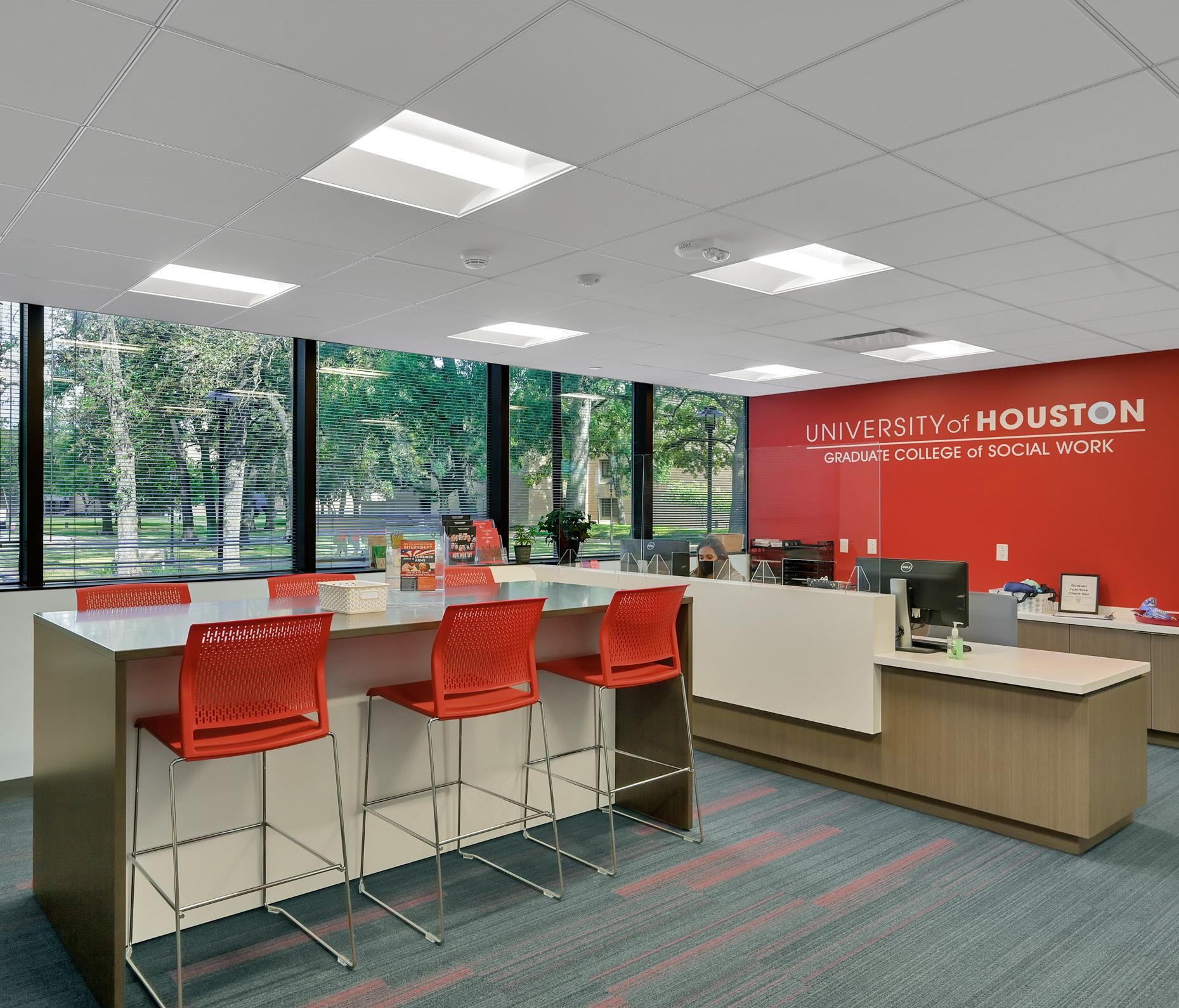
Visitors soon encounter the large colorful mural facing the building’s former primary entrance. Designed by renowned artist Reginald C. Adams, the theme of the new mural is “Pulling Together” and the artwork depicts people pulling on chains connected to a door. The door is meant to symbolize new doors of possibility and the chains represent the struggles that we all face in life. Broken glass mirrors are meant to reflect the viewer, showing that although we are imperfect, we can all have equal opportunities once that door opens.
The faces featured within the mural are based on the likenesses of actual students, faculty, and alumni of the college. The mural has become its own character in the story of the Graduate College of Social Work, serving as part greeter, historian, storyteller, facilitator of belonging, and a reminder of our mission and the important work to be done together.



